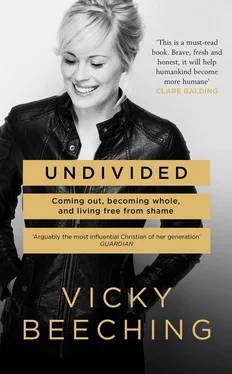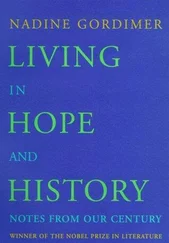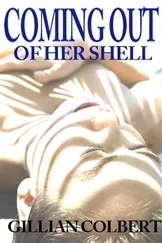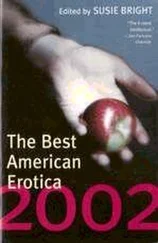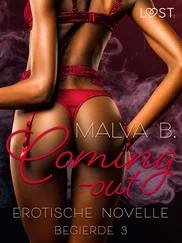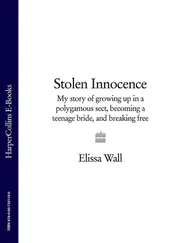My mum led the musical part of the worship service every Sunday at church and at weekday prayer meetings. She was a prolific songwriter, penning something new every week without fail. After the sermon, there would be a time of reflection and she would play her latest song—it was her way of serving the church community, using her gift to help others.
Mum worked on her new song during the week at home, in the snatched moments that any parent makes use of while raising kids. So while I was building with Lego blocks or arranging my stuffed animals in rows, she would grab ten minutes to craft her latest song. As soon as I could shake a tambourine or rattle a maraca, I joined in on Sundays, toddling up to the front to stand next to her and trying to keep time with the song.
Our church taught that the Bible was literally true, word for word, so Adam and Eve were considered actual humans who historically existed. The talking snake in the book of Genesis was considered historical too, as was the speaking donkey in the book of Numbers. Everything had happened exactly as it was written.
A few members of the church went out with presentations about Creationism in their spare time, trying to disprove the scientific evidence behind evolution. Medicine was suspect, as people believed in God’s healing power, and we heard stories of people like Kathryn Kuhlman, Smith Wigglesworth, Aimee Semple McPherson, and Benny Hinn, who (allegedly) healed thousands by the power of prayer.
There was a firm belief that God still did miracles today, so when the pastor gave an altar call, people would come forward and stand at the front to be prayed for. Many spoke in tongues—something described in the New Testament as an unknown language given to believers by God. Sometimes, when prayed for at the altar, these people would fall down—“slain in the spirit”—when the Holy Spirit was thought to have powerfully touched them.
When I was four years old, my first job at church was to carry a small basket of cloths. These were known as “modesty protectors.” If during the altar call a woman was “slain in the spirit” and fell down, I would carry my little basket of cloths to where she was lying. If her skirt or dress had accidentally found its way above her knees, I would lay one of the cloths over her legs to protect her “modesty.” I felt very adult and responsible as I trotted around and carried out this important task.
For most of the service, we children had our own meeting in a different part of the building: kids’ church. It was a place for the under-twelves to go while the adults listened to the sermon, as the preaching often lasted for forty-five minutes. In kids’ church we had our own teachers, songs, and picture books; it was a lot of fun.
One thing baffled me though. The picture-book Bible that was read to us had some very disturbing images and stories. The double-page illustration of Noah and the flood left me bewildered about why so many people were pictured in the throes of death, flailing in the foaming waters. The next page showed Sodom and Gomorrah burning to the ground with hundreds of people, charred and frightened, running to escape the flames.
We were told Sodom and Gomorrah were destroyed because of the “sin of homosexuality.” When a bold child piped up, asking, “What is homosexuality?” the only reply given was “We can’t talk about that until you’re older—just know that it’s something very bad.” In my tiny mind, this instilled the knowledge that whatever homosexuality is, it must be terrible indeed.
The picture-book Bible also told the story of Moses and the Israelites fleeing captivity in Egypt. God had struck the Egyptians with various plagues when they refused to release the Israelites from slavery, culminating in the murder of every Egyptian firstborn boy. The artwork showed parents sobbing, holding their dead children in their arms, as Moses led his people out of captivity toward the promised land. It was a lot for a child to take in.
Another page showed Abraham sacrificing his little son, Isaac, as God had asked him to. He’d tied the boy up with ropes and raised a knife over the child, ready to kill him. The story ended with God telling Abraham, at the very last moment before he stabbed the child to death, not to murder the boy after all; it had been a test of his faithfulness. This too seemed an extremely violent and frightening story.
Even as a child, I had a hundred questions. What about all the people who drowned in Noah’s flood—did they really need to die? What about everyone who was burned in Sodom and Gomorrah? What about the Egyptian baby boys who were slaughtered—how could that be fair? How did Isaac ever recover from the trauma of being tied up by his dad and almost knifed to death? Why was all of this portrayed as okay? And how could these stories be the work of a loving God? My mind spun. It didn’t feel safe to ask any of these questions at kids’ church, and I felt bad for thinking them in the first place.
Many of our worship songs were about love and forgiveness, but others contained military language and reminded me of the more violent Bible stories. Hymns had lyrics like: “Onward Christian soldiers, marching out to war, with the cross of Jesus going on before. Christ, the royal Master, leads against the foe; forward into battle see his banners go. Like a mighty army moves the Church of God.”
More modern songs also reflected these themes: “The victory is the Lord’s; we’ve just begun to fight,” “The Lord is a warrior,” and “Our God is mighty in battle, our God is mighty in war.” I found the aggressive language of these songs a bit confusing and unsettling. Although I understood, as much as a child could, that they were based on the Bible, they still seemed at odds with the Jesus who was pictured in my kids’ Bible holding a baby lamb in his arms and smiling at a crowd of children in a field of flowers.
If God really was as angry as those violent stories suggested, I didn’t want to be on the receiving end of his punishment, or on the wrong side of a church “marching out to war.” I never wanted to feel like the people drowning in the flood waters as Noah sailed past. It was confusing. Was God the person standing with the lamb, the children, and the flowers, or was he an angry warrior destroying people?
I brushed these thoughts away from my mind, as they were too much for me to figure out at that tender age. My simple childhood faith was one rooted in God’s love and kindness, so I tried to focus on the stories that emphasized those qualities. Besides, I had no reason to believe I’d ever be “out of the club.” After all, I was part of God’s army, not someone his people were fighting against. I was “inside the ark” and always would be—not someone left outside to drown. At least, that’s what I imagined back then.
Another thing that stood out at church was that God was always described as male. Jesus was male too, of course, and our senior pastor and elders were all men. God was called Father, not Mother. It gradually dawned on me that girls and women were seriously underrepresented.
When anyone preached about marriage, St. Paul’s teaching was quoted: “The husband is head of the wife just as Christ is the head of the church.” Boys and men were in charge at church, and men took the leading roles in the exciting Bible stories, whereas women were almost always supporting characters. I wasn’t used to challenging “what the Bible clearly said” as a child, but something about it didn’t sit well with me. I guess I felt shortchanged for being female, and sad that maybe I couldn’t be part of the action.
Back then, in the mid-1980s, most UK churches weren’t ready to give women the freedom to lead. Singing or teaching kids’ church was allowed, but being a senior pastor or priest-in-charge was not. It was a stained-glass ceiling, a layer of promotion through which women could not pass.
Читать дальше
